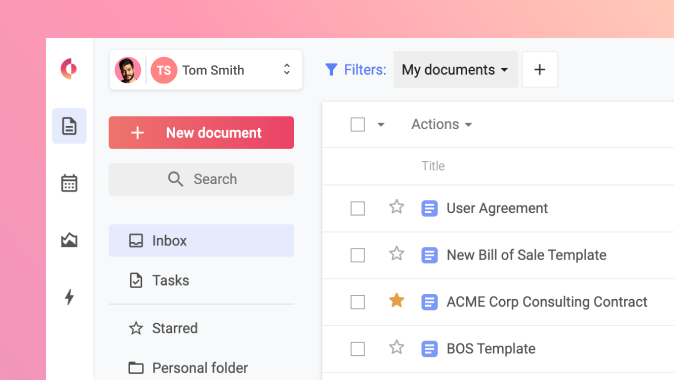Types of Exemption Clauses Found in a Contract
In today’s business world, liability is a serious concern when making agreements. To proceed with confidence, answers to questions need to be clear to provide assurance for both sides. Who is responsible for what, and how is that responsibility determined? The answers to these questions are found in the exemption clauses of a contract.
An exemption clause can be thought of as the “what-if” part of a contract. That is, it is the clause that explains the consequences of breaching the agreement, unsafe behavior, or any other variables that may occur.
There are three main types of exemption clauses that are critical to know when creating and managing contracts.
Three main types of exemption clauses
1. Exclusion Clauses
Typically, an exclusion clause is used to eliminate a party from any responsibility in the case of a breached contract. An exclusion clause may be a full or partial exclusion. Regardless, it will protect that party from any responsibility regarding a specific event.
The terms and conditions of almost any product today contain exemption clauses. Here is a common example of an exemption clause. A section of the contract states a company is not responsible for the use of this product in a certain way, such as negligence or recklessness when using that product.
The benefits of this type of clause in a contract are significant: they remove all liability. Yet the difficulty isn’t in including an exclusion clause, but in enforcing it.
Courts are often suspicious of total exclusion clauses, and unless they are written correctly, they are easily overturned. It’s critical that exclusion clauses are clear and reasonable, or a court will not accept them.
A simple way to ensure the consistency and clarity of exclusion clauses within an organization is by creating and using contract templates and a clause library inside contract lifecycle management software. With these features, organizations can be sure that only approved clauses are being used and that the company has proper protection.
2. Limitation Clauses
The limited liability clause, or limitation clause, is similar to the exclusion clause. One difference is that it does not go to the same extent as a complete exclusion. With limitation clauses, one party is not totally excluded from liability in the case of a certain event. However, their liability has limitations. This often makes this kind of contract more acceptable in court.
For example, a limitation clause could state that in the event of an injury, the company will pay up to $500 in damages. Limitation clauses often have wording in the negative. For example, “The company will not be liable for more than $500 in damages.”
This effectively limits the amount of damage that the company takes. However, it still grants some liability, so there is not a total exclusion. Maintaining consistency with limitation clauses is also easier through contract templates and preset wording in contract lifecycle management software.
3. Indemnity Clauses
Indemnity clauses are often the most complex out of the three main exemption clauses. With this particular clause, one party agrees to “indemnify” the other party. Simply put, it will compensate for their harm or loss. Instead of seeking to sue for damages, one party agrees to protect the other party in the case of a lawsuit.
For example, a company may develop a new kind of technology and sell it with an indemnity clause. A customer then purchases the technology and another company subsequently sues, claiming the technology is a copy of theirs. The original company is then liable to cover the cost of the lawsuit for the customer. This is because of the indemnity clause included in the contract.
Drafting, managing, and negotiating exemption clauses is challenging among startups as they determine what is necessary. It also impacts enterprise businesses as they seek to get visibility and consistency in the agreements they make. However, managing exemption clauses can be streamlined by using contract lifecycle management software.
Exemption Clauses managed through contract lifecycle management software
Managing a document throughout the entire contract lifecycle — from creation to signature and beyond — is much simpler when managed in cloud-based contract lifecycle management software.
Having all people, processes, and documents in one place brings the benefits of security, collaboration, and efficiency to any company. While the content of a contract may remain complex, ensuring that content is consistent and easier to manage is possible with the power of a platform.



